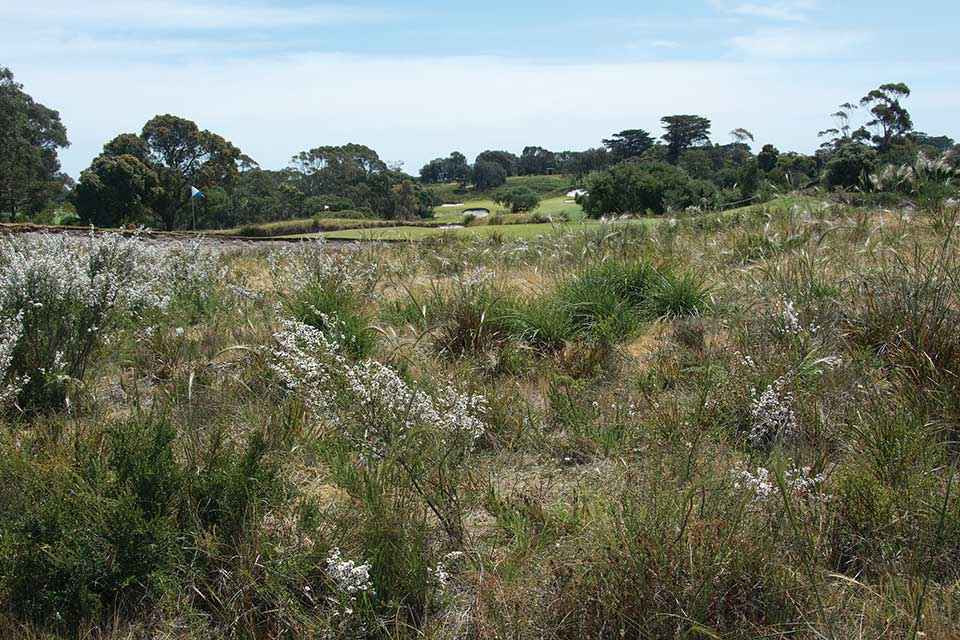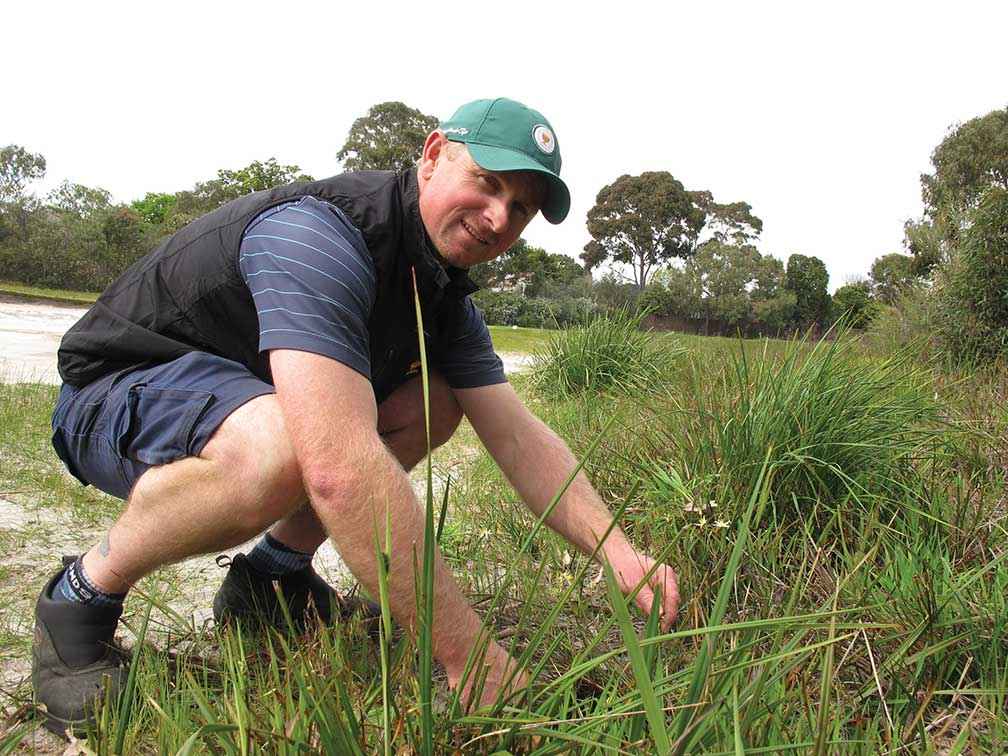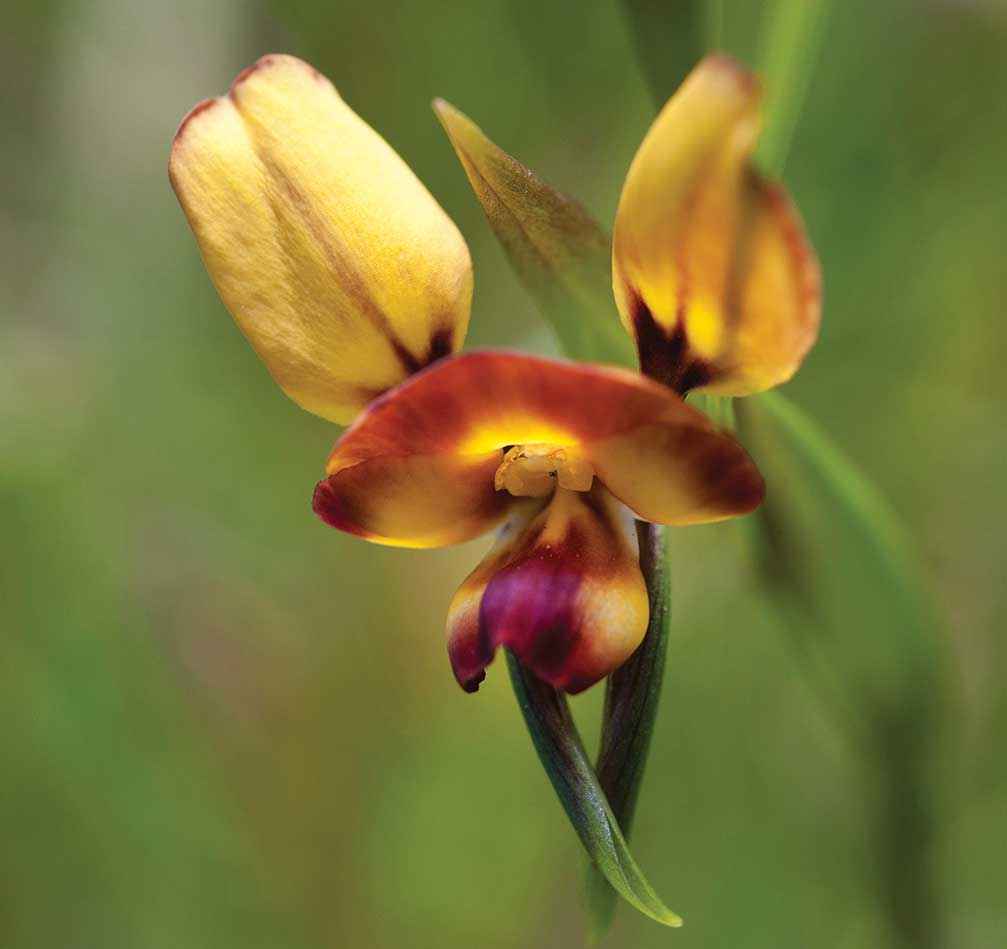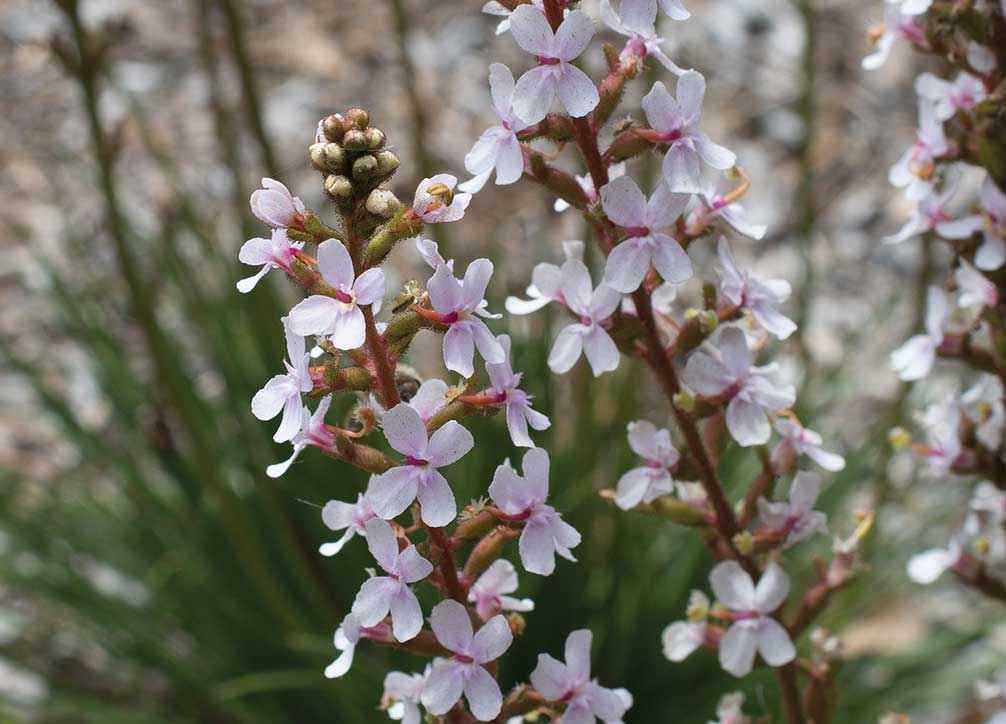Victorian Landcare Magazine - Summer 2020, Issue 77

The seeds for the preservation and regeneration of indigenous plants in the Bayside area of Melbourne lie, literally, on the world-famous golf courses of the area, the so-called sand belt courses of Beaumaris, Black Rock and Cheltenham.
While there are quality bushland reserves in the Bayside area, the scale of the golf courses – 231 hectares of abutting land – and their undisturbed areas of indigenous vegetation, make them an extremely valuable part of Melbourne’s open space (and breathing space) for humans and the hundreds of birds that roost, nest and feed in them.
Royal Melbourne Golf Club (RMGC), one of Australia’s top ranked courses, is home to about 120 locally indigenous species including six rare orchids and lillies.
From its beginnings in Black Rock in 1926, the natural dune landscape was admired for both its challenges as a golf course and as a wildflower wonderland.
The course was designed by Yorkshire-born Scot Alister MacKenzie. The dune landscape, contours, and vegetation on the Black Rock land reminded MacKenzie of the famous links courses in Scotland. While the fairways and greens would be manicured and mown, the remnant heathland and woodland would be left alone, creating a strong visual impact through contrasts in colours and textures.
Thanks to thoughtful designers, curators, ground staff and golf club members, the indigenous heathland and woodland on the course has been well managed over the years. Along with the nearby Long Hollow Reserve in Beaumaris, it is the most biodiverse area of remnant landscape in the area.

Above: Horticulturalist Stuart Moodie inspects a rare Clustered lilly growing at the Royal Melbourne Golf Club.
While many golf courses mow the rough to make it easier for players, Royal Melbourne has not, which has helped preserve orchids, lillies, grasses and groundcovers. For the past 18 years the club has employed a full-time horticulturalist, Stuart Moodie, who has introduced controlled burning of the heathland, an Aboriginal land management practice which regenerates seed lying dormant in the soil.
Not all golf clubs have followed this approach, with many preferring parklands to heathlands.
But golf course architect Mike Clayton says indigenous plants are the future for viable and sustainable golf courses because of the ability of these plants to thrive in the hot and dry summers and nutrient-poor Australian soils.
“Most golf clubs haven’t done a very good job on maintaining indigenous plants or managing their land. Even when they have planted ‘native’ trees, they are not usually indigenous to the area. It’s a mistake the whole country has made — not understanding indigenous vegetation. But there’s a chance to turn that around now as a lot of the trees on established golf courses have come to the end of their lives. In the next 50 years we could make golf courses a great example of good land management. Indigenous plants require no watering once established. In the sand belt area, the aesthetic value of the natural vegetation on the RMGC is one of the reasons it is ranked as a world-class golf course.”
Horticultural staff from the Bayside Community Nursery collect seed stock from sites on RMGC and the public Sandringham Golf Course and volunteers propagate about 100,000 seedlings a year that get planted out in bushland reserves, nature strips and private gardens.
The Sandringham Golf Course, currently undergoing a State Government-funded $18 million redevelopment, will be replanted with this stock. Other clubs in the sand belt area – Victoria, Kingston Heath and Metropolitan – are also replanting with local heathland plants sourced from the Bayside Nursery.

Above: Wallflower orchid (Diuris orientis).
The bushland areas of Beaumaris and Sandringham were favourites with botanists and bush walkers from the earliest days of European settlement and the common names the early residents gave to the plants tell their own stories: Wedding Bush, Eggs and Bacon, Spider Orchids, Nodding Greenhoods, Wild Heath, Jumping Jacks, Jack-in-the-Pulpit, Billy Buttons, Cowslips, Blue Pincushion, Blue Squill, Chocolate Lillies, and Fly Catchers were among 140 local plants exhibited at Sandringham’s first wildflower show in October 1932.
Around the turn of the 20th century botanists had given the term ‘Sandringham flora’ to the unique woodland/heathland vegetation of the area between Sandringham and Mordialloc, and inland to Oakleigh and Springvale. A census in 1911 listed 448 indigenous species in the area.
By the 1950s, with the spread of housing and industry, the golf courses and remnant bushland reserves held the last examples of this unique vegetation. By 1988 when another survey was done, 260 species had disappeared. It’s now thought around 120 species survive on the four golf courses, seven bushland reserves and foreshore in the Bayside Council area.

Above: Grass-leaved trigger plant (Stylidium graminifolium).
RMGC member Janet Noblet has preserved many of the wildflowers in pressed and dried form in a large format display that is regularly featured in the clubhouse entrance.
“There’s always something to see. Spring is the really colourful time, but the wattles start to blossom in winter and in summer the native grasses are a feature waving in the wind.”
Janet Noblet’s mother was a golfer at Royal Melbourne and her interest in the native plants kindled Janet’s interest.
“Mum would come home from golf and say, ‘we saw such and such an orchid today’. She would be really excited about it. Golf is a demanding game and hitting the ball accurately is the focus, but most of us appreciate the wildflowers too.”
There are 20 volunteer Friends groups in the City of Bayside, including the Bayside Community Nursery group. Guided tours of the bushland reserves are held during September and October each year. The RMGC also conducts a guided tour each spring. Contact friends@bayside.vic.gov.au
Martin Curtis is a volunteer in the George Street Reserve, a two-hectare area of remnant heathland abutting the Sandringham and Royal Melbourne golf courses.
Thank you to Pauline Reynolds for the botanical photographs.